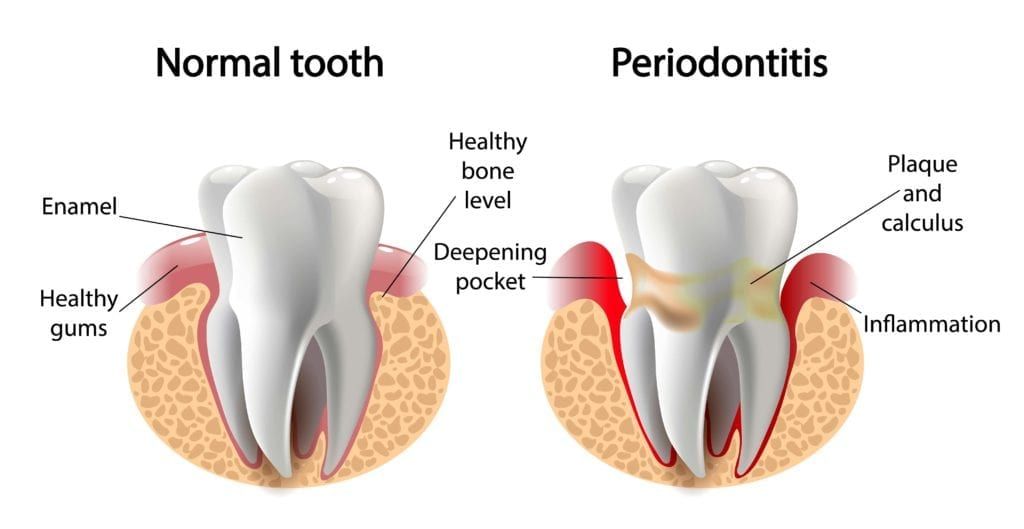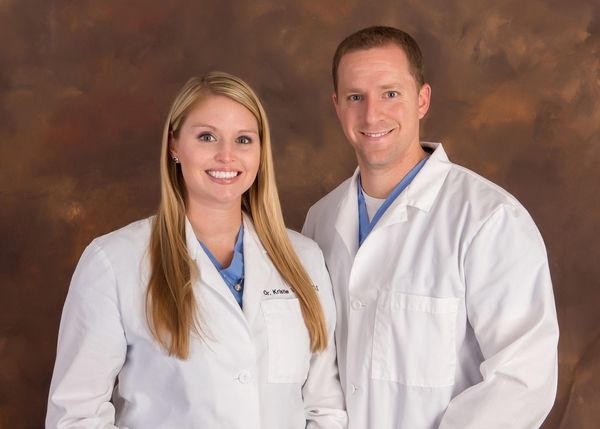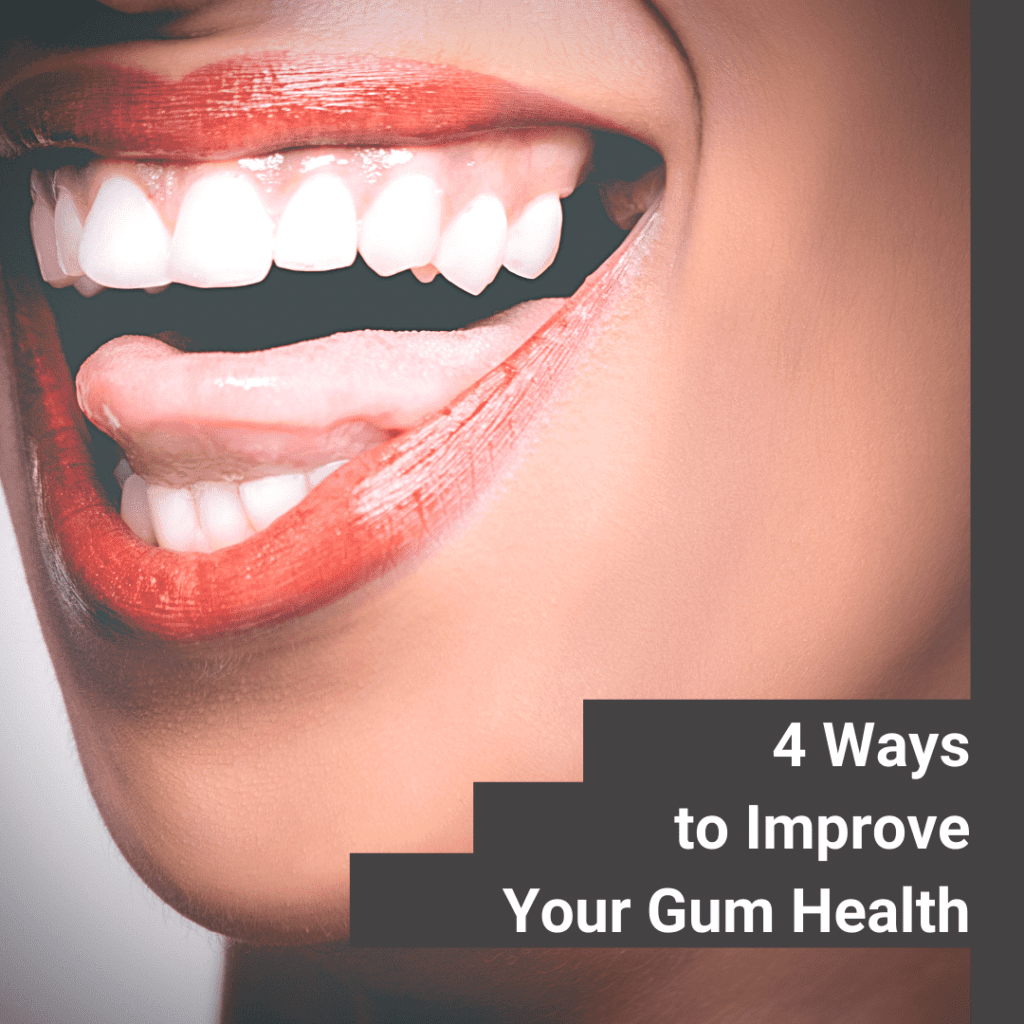Even though dentists are primarily associated with teeth, their job doesn’t end there. In fact, dentists are just as concerned with the condition of your gums as they are with the condition of your teeth. This is because your gums help to support your teeth and are one of the structures responsible for holding them in place. Not only that, but having healthy gums can also make your smile look great.

Unfortunately, gum disease is a threat to both your gums and your oral health. Gum disease can occur in two different forms known as gingivitis or periodontitis. Gum disease starts off as gingivitis and may or may not be noticed right away. If left untreated, however, gingivitis can quickly develop into periodontitis. Periodontitis has more severe symptoms that are generally more noticeable such as pain or tenderness in the gums, severe gum recession, and possibly tooth sensitivity.
Although the CDC notes that 47.2% of Americans over the age of 30 are affected by some form of gum disease, there are things that you can do to avoid being part of this percentage. In order to improve your gum health, you can do the following:
Brush Twice a Day
The first way to improve your gum health is actually to brush your teeth twice a day for two minutes at a time. While doing so, you will want to be sure to use a soft bristled toothbrush and fluoridated toothpaste. Brushing your teeth improves your gum health because it removes plaque and bacteria from the surface of your teeth. Keeping the bacterial populations under control makes it harder for bacteria to accumulate along the gums and cause gum disease.
Floss Daily

In addition to brushing twice a day, you should also floss daily. Flossing removes plaque and bacteria just like brushing, however it removes it from areas that your toothbrush misses. One especially important area that flossing removes plaque from is along the gum line. To get the most out of your flossing routine, the best time to floss is at night before you brush your teeth and go to bed. This is because it allows the fluoride from your toothpaste to move in between your teeth and along the gums.
Get Your Teeth Cleaned
Even with the best brushing and flossing habits, you will still need to have your teeth professionally cleaned by a dental hygienist once every six months. If you are at an increased risk for gum disease, then your dentist may recommend cleanings more often. During a dental cleaning, special tools are used to remove plaque, bacteria, and tartar from the teeth and along the gums. Tartar is hardened plaque that can only be removed with the tools used during a cleaning.
Use Mouthrinse
In addition to brushing and flossing, you can also use mouthrinse to help keep your mouth clean and reduce the risk of gum disease. Certain over the counter mouthwashes decrease the risk of gum disease by making it harder for plaque and tartar to adhere to the surface of the teeth. Mouthwash is especially effective when used after eating or drinking.

Dr. Chris Vinson and Dr. Kristie Vinson attended the College of Dentistry at The University of Oklahoma. Dr. Chris Vinson has earned a fellowship from the Misch International Implant Institute and a fellowship in International Congress of Oral Implantology. He is also certified to administer Oral and IV sedation to his patients through The Montefiore College of Medicine in New York and is Teeth-Express and Invisalign certified. Dr. Kristie Vinson is trained in sedation dentistry, Botox, and dermal fillers. She received a Fellowship from the Misch International Implant Institute and the Fellowship in International Congress of Oral Implantology. She is also Teeth-Express and Invisalign Certified.




